How I Turned An Overgrown Field Into My Most Productive Vegetable Garden Ever
Wondering how to turn an overgrown field into a garden full of tasty produce? It’s easy! Here’s how I turned an old patch of hay into my best vegetable garden ever.
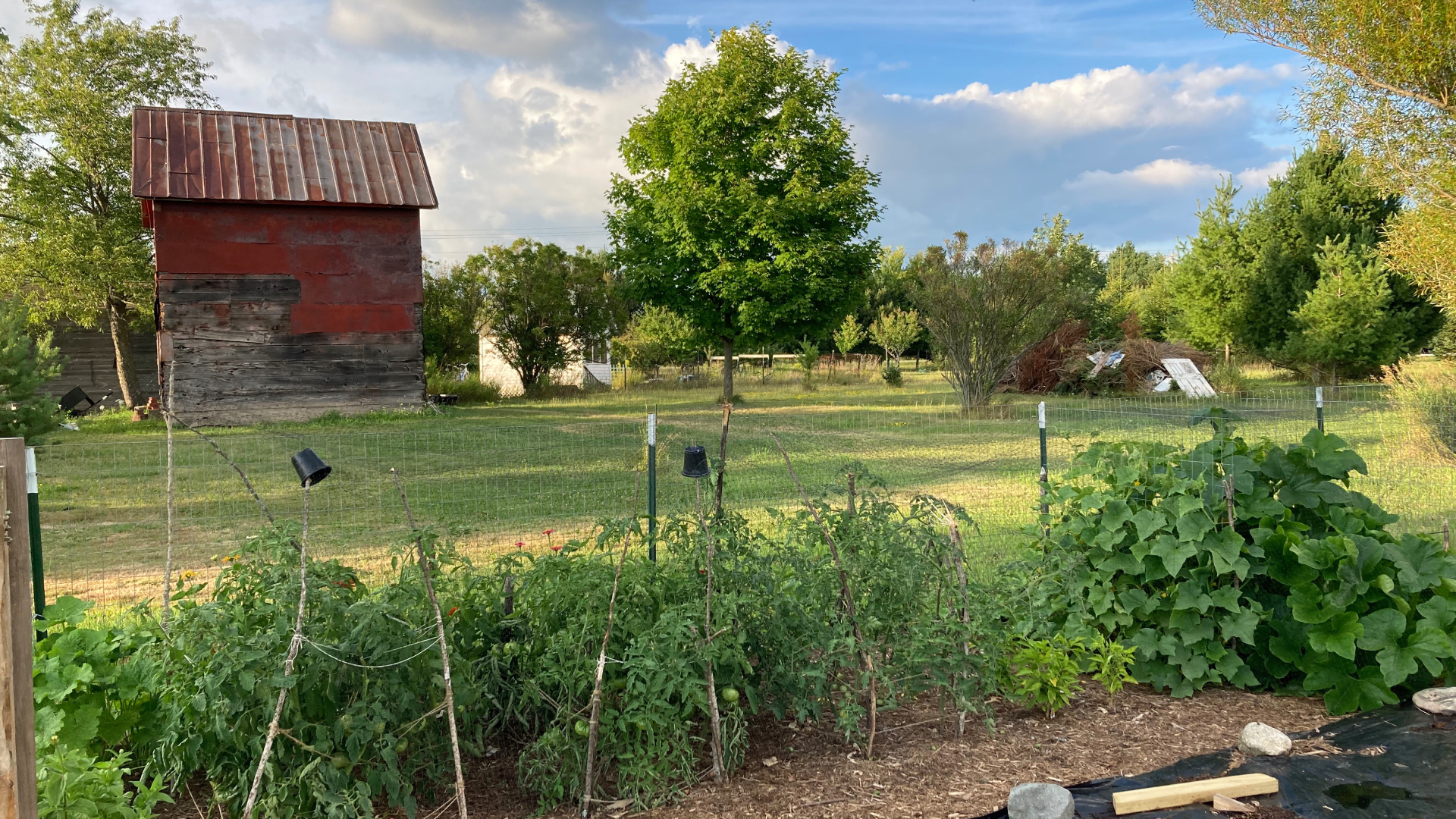

If you’re dreaming about how to turn an overgrown field into a garden, you’ve come to the right place. Last year, I transformed a small piece of land that was once a cattle farm (then a weed-covered hayfield) into a garden positively bursting with vegetables.
Though I’m lucky to have lots of room to play, the no-till method I used works for any size space. So whether you have an entire acre of hay to convert or just a small yard full of grass you want to remove for a garden, you can scale this project to fit your needs.
The best part of this project, though, is how easy it is to turn anywhere into the garden of your dreams. The hardest part is figuring out what to do with all your delicious homegrown produce. Tomato sandwiches, anyone?
How to Turn a Field Into a Garden
Before I started this project, I already knew where I wanted to put my new vegetable garden. There was a lovely little spot near a willow tree on a small patch of land my parents own. It was the perfect location, except it was covered in hay.
I tried to grow a vegetable garden several years prior in a different area of that same hayfield, but it was sloped so one half was always too dry and the other was always too wet. The main problem, though, was the way I tried to clear it.
I spent countless hours cutting hay and almost lost a foot trying to control a handheld rototiller. Even after all that work, the hay sprouted back with a vengeance. I gave up for several years. Vegetable gardening wasn’t in the cards, I supposed.
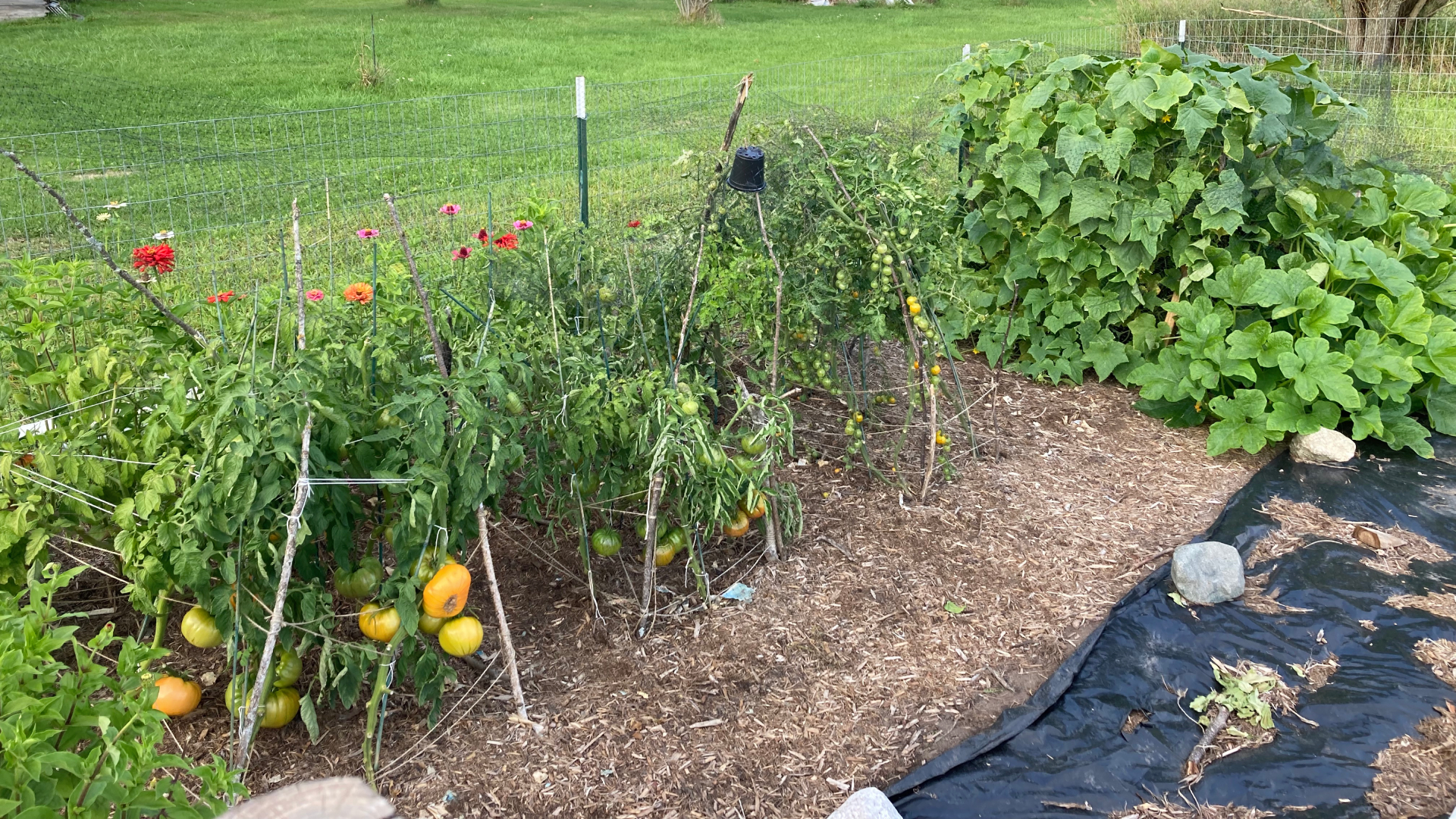
It wasn’t until I discovered no-till gardening that I felt confident enough to try starting a vegetable garden from scratch again in a better location. I’m so glad I did because my new vegetable garden was my most successful gardening venture ever.
Gardening tips, videos, info and more delivered right to your inbox!
Sign up for the Gardening Know How newsletter today and receive a free copy of our e-book "How to Grow Delicious Tomatoes".
Here’s how I did it and how you can try it for yourself in five easy steps:
1. Solarize
Solarization is an easy and effective way to kill hay, grass, and weeds. It is ideal for heavily overgrown areas. I’ve used solarization to kill out of control daylilies and even to turn my sister’s boring lawn into a beautiful flower garden.
Solarization helps eliminate pests, but it can also harm beneficial microorganisms in the soil. I knew from my past experience trying to turn a hayfield into a garden, though, that hay fights dirty. I needed a natural way to kill the hay completely and this was it.
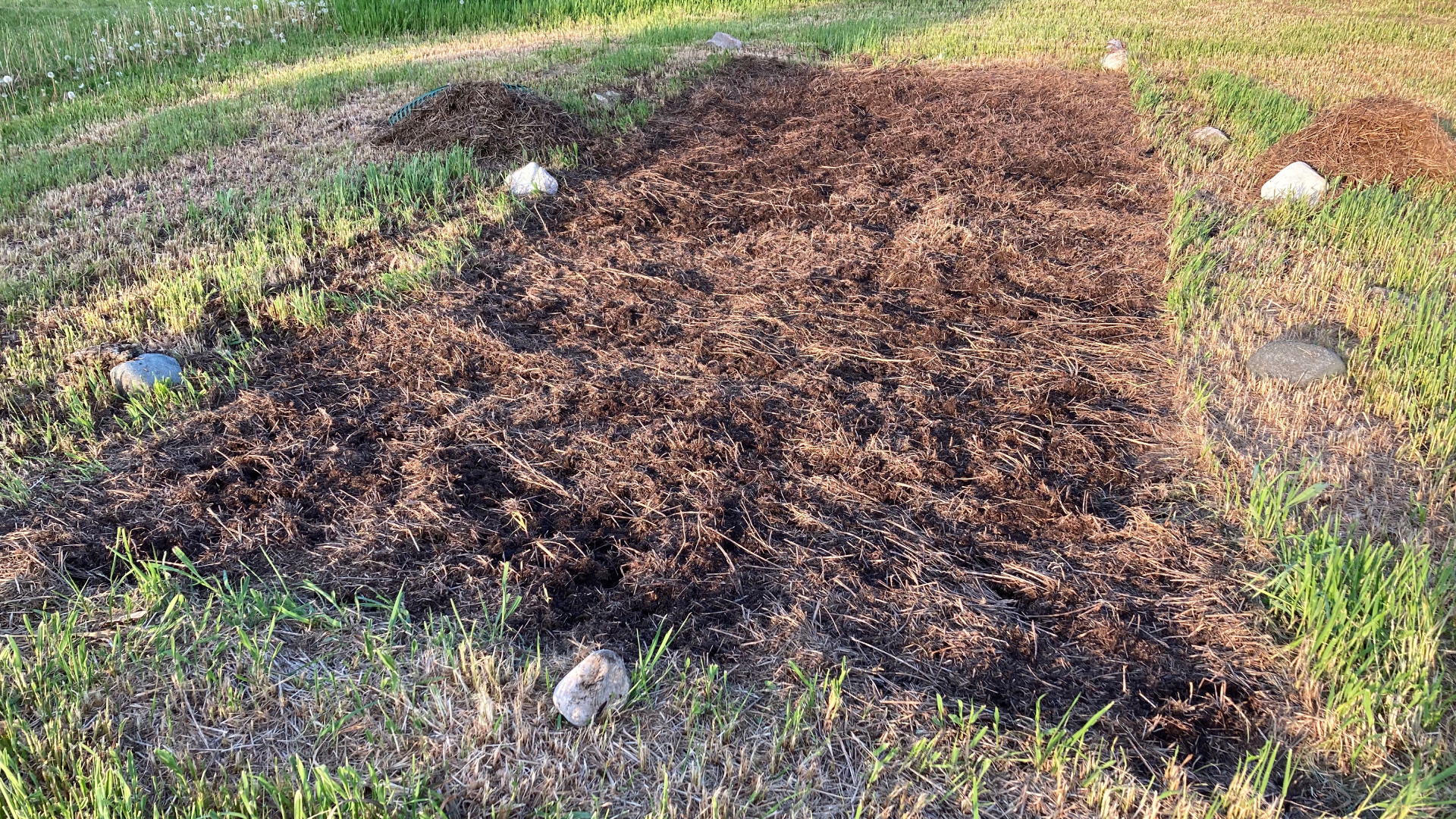
All you need to solarize an area is plastic sheeting and time. You can find plastic sheeting at most hardware or big box stores in the paint section. Clear is best, but black works as well. Lay the plastic sheeting over the hay, anchor it with rocks, bricks, or anything heavy that will keep the sheeting in place for several months, and wait.
Leave the area covered for at least 2-3 months–the longer the better. I did this step in fall and left the area covered until spring.
The next spring, I moved the plastic sheeting and covered the area next to the soon-to-be garden in order to have more space to expand next year. I’ll leave it for another year and repeat this process on the other side next spring.
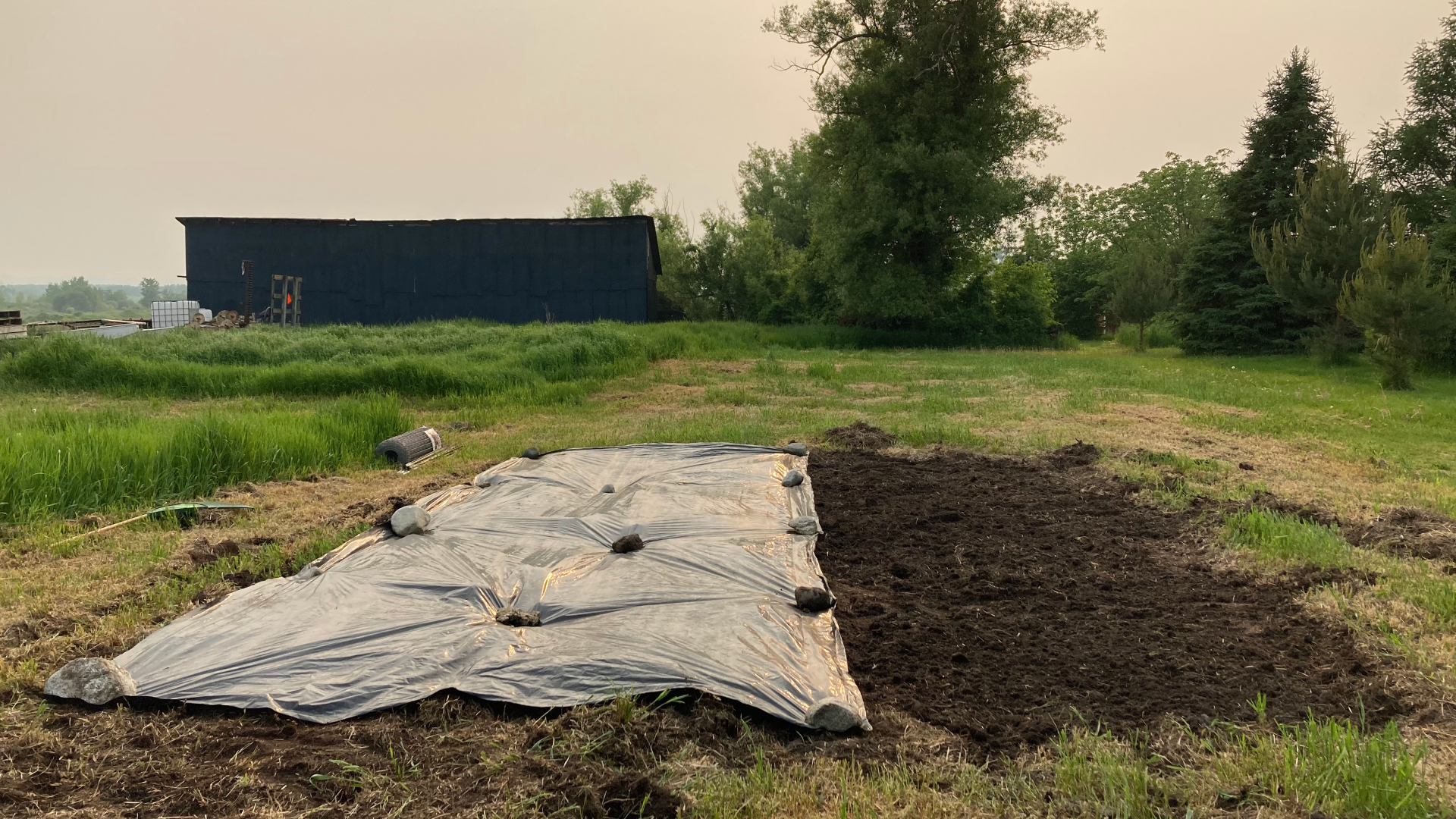
2. Level the Area
When I lifted the plastic sheeting in spring, the hay was dead. But unfortunately, hay has long roots that spread and form a mat under the surface of the soil. I know I said this was a no-till method, but I did do a tiny bit of tilling with a rake just to remove any leftover roots.
I used a stiff metal rake to loosen and pull out large clumps of roots and level the area to avoid the drainage issues I had in my old garden.
3. Build the Fence
Once the area was level and free of any large root clumps, it was time to put up the fence. I wanted a simple DIY vegetable garden fence that would keep out deer, last for more than a couple years, and wouldn’t break the bank.
Every 8 feet (2.4 m) or so, I sank metal fence posts into the soil, leaving space for a wooden gate. Then I used 4 ft (1.2 m) tall metal wire fencing to close in the garden area.
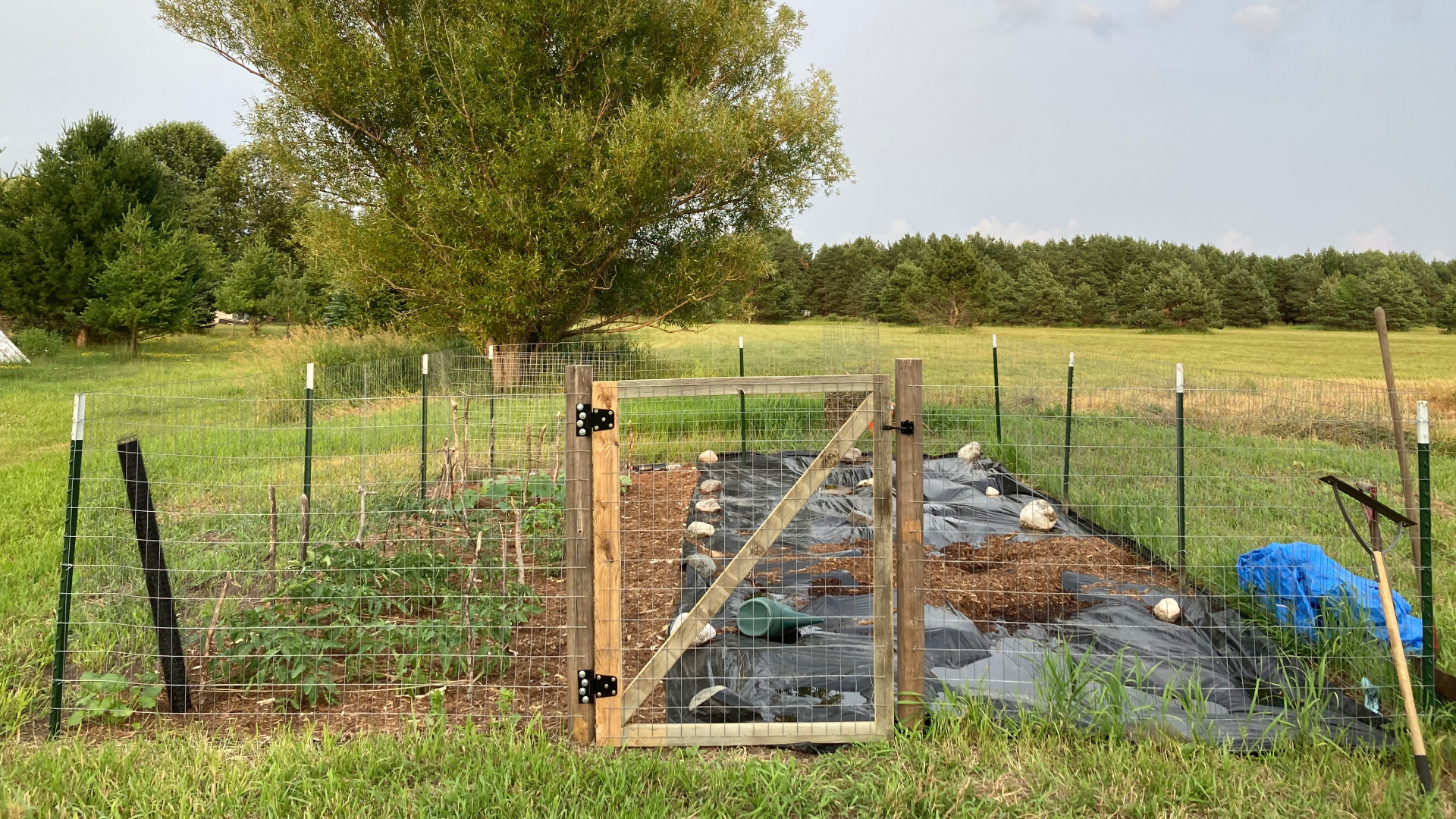
4. Plant
Next, I planted my seedlings. I started this vegetable garden from seed with the help of a plastic tote greenhouse, a necessity for vegetable gardening in USDA Zone 5 where the growing season is short.
I usually plant more than I need because it seems like half of my crop dies from disease or is devoured by pests. But because of my fence, which kept pesky deer away, all of my seedlings survived.
5. Mulch
The final step is to mulch. When you’re converting a field to a vegetable garden, mulch is a must. This helps prevent hay, grass, and weeds from growing back and diminishing your yield. Mulch also helps soil retain moisture, which means less watering.
To fight especially aggressive weeds first add a layer of newspaper. Lay 4-6 sheets of newspaper, making sure to overlap the edges by at least 1 inch (2.5 cm). Sprinkle with water to keep the newspapers from blowing away.

You can also complete this step before planting and simply tear holes in the newspaper where you want to plant. Be aware, though, that any accidental holes are vulnerable spots where weeds can grow.
Add at least 2 inches (5 cm) of mulch. The newspaper and mulch will decompose over time and add organic material back into the soil.
All that's left to do is tend to your new no-till vegetable garden and enjoy the fruits of your not-so-laborious labor.

Laura Walters is a Content Editor who joined Gardening Know How in 2021. With a BFA in Electronic Media from the University of Cincinnati, a certificate in Writing for Television from UCLA, and a background in documentary filmmaking and local news, Laura loves providing gardeners with all the know how they need to succeed, in an easy and entertaining format. Laura lives in Southwest Ohio, where she's been gardening for ten years, and she spends her summers on a lake in Northern Michigan. It’s hard to leave her perennial garden at home, but she has a rustic (aka overcrowded) vegetable patch on a piece of land up north. She never thought when she was growing vegetables in her college dorm room, that one day she would get paid to read and write about her favorite hobby.
-
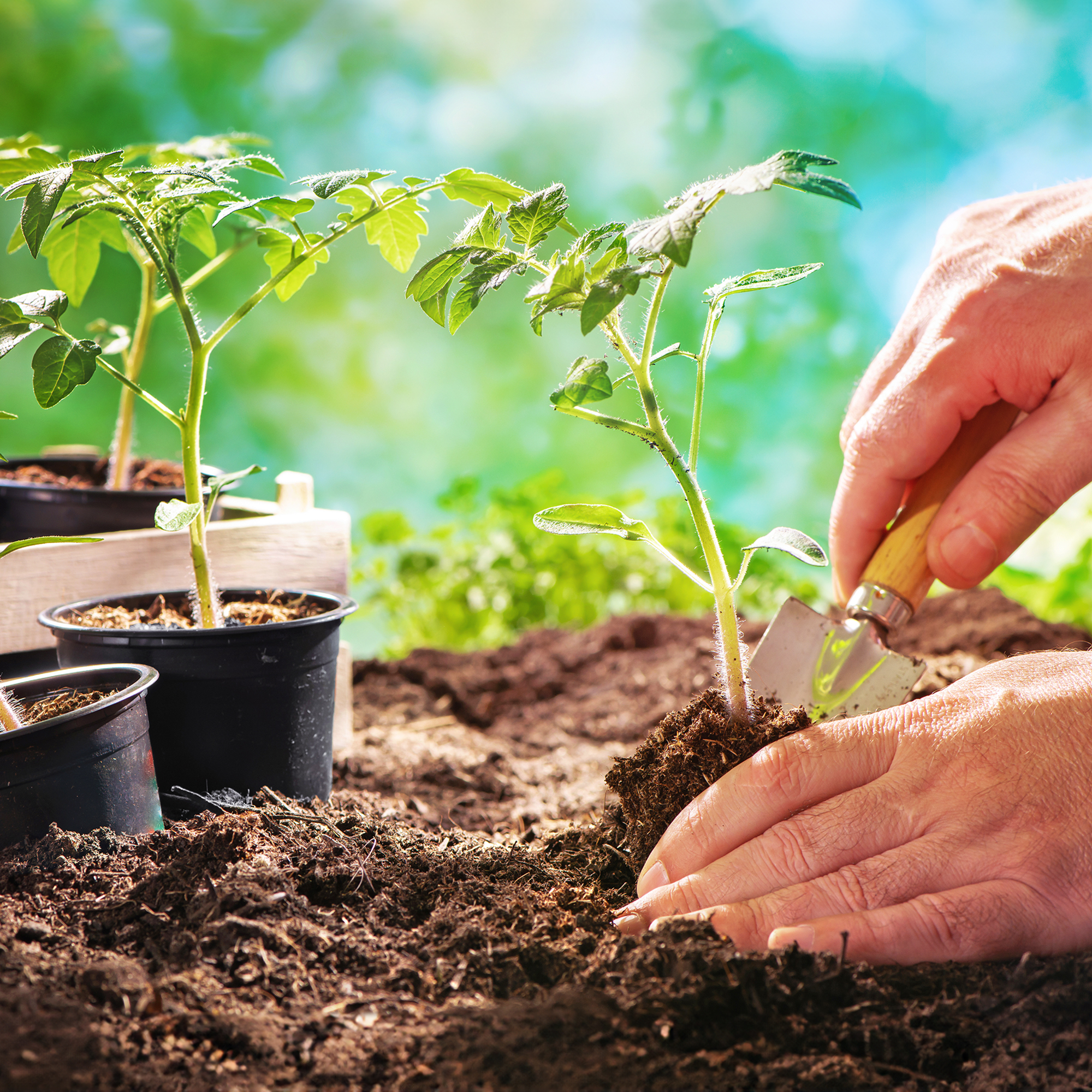 Best Soil Tor Tomatoes: How To Cultivate The Perfect Blend & Add Amendments For A Bountiful Harvest
Best Soil Tor Tomatoes: How To Cultivate The Perfect Blend & Add Amendments For A Bountiful HarvestGive your tomato plants the foundation they need. Learn how to mix the ideal soil and choose the right amendments for your most abundant harvest yet.
By Amy Grant
-
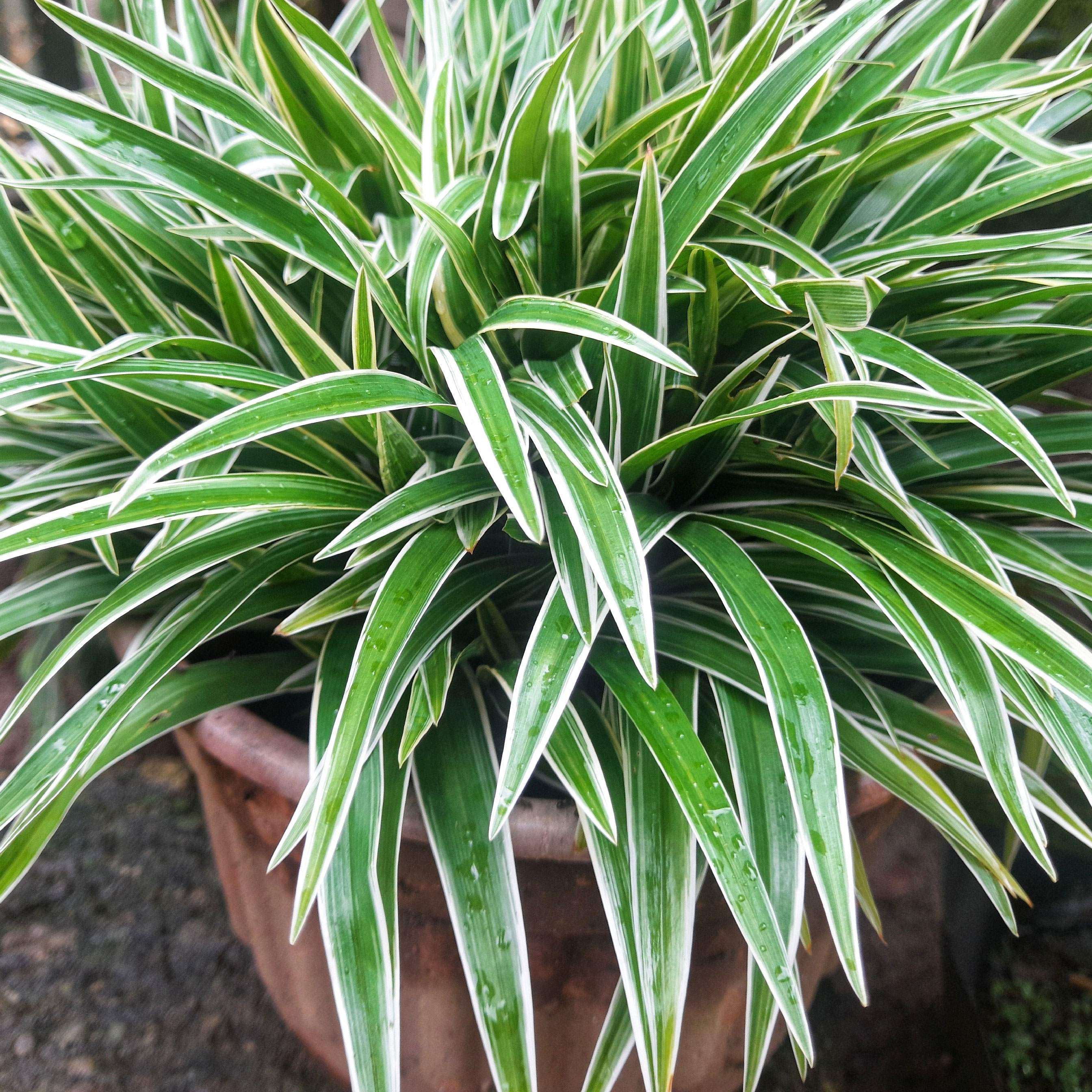 Want To Know How To Make A Spider Plant Bushier? 4 Secrets For Lush & Bushy Spiders
Want To Know How To Make A Spider Plant Bushier? 4 Secrets For Lush & Bushy SpidersAre you looking for ways to make your spider plant look bigger or more dramatic? Follow these quick and easy tips on how to make a spider plant bushier
By Teo Spengler